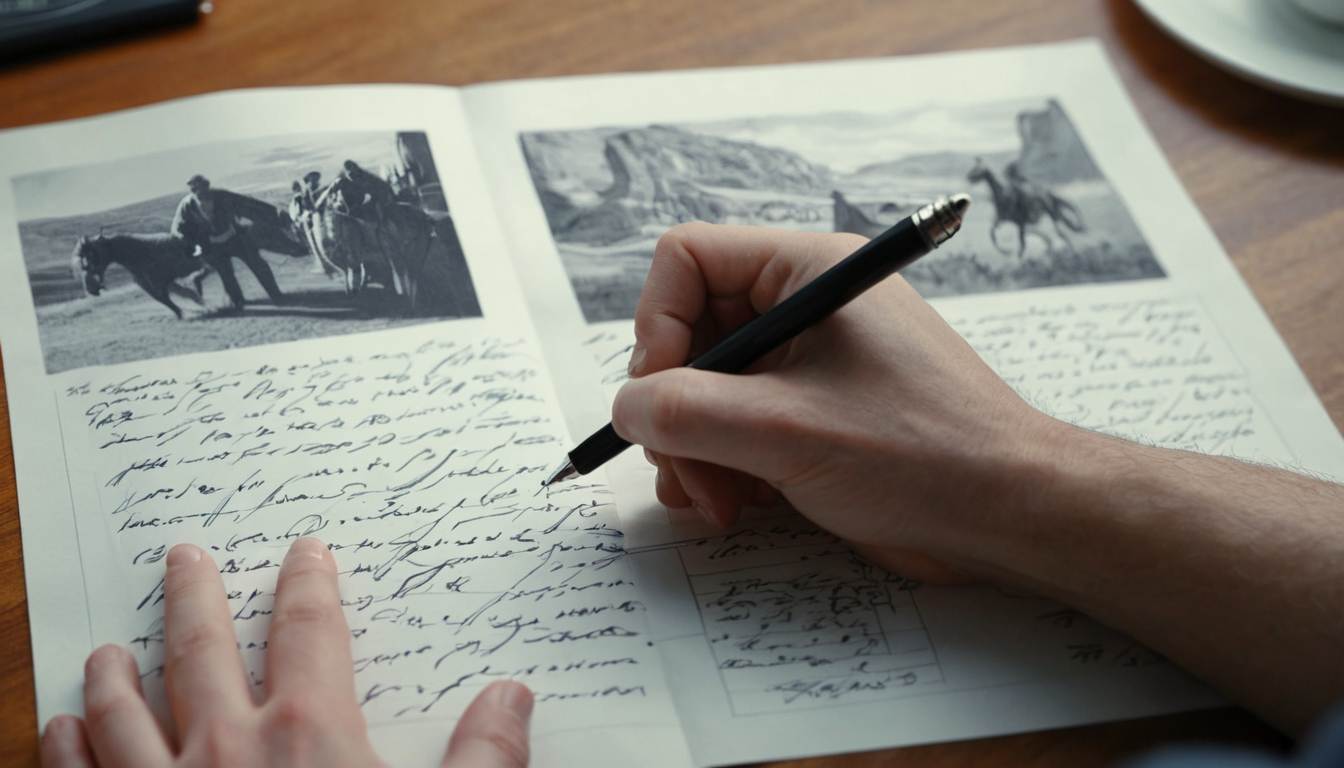The 21st century has been revolutionary for media and communications. What started with TV in the early 50s, commercials are now viewable at the palm of your hand. Marketers who properly use commercials to turn viewers into paying customers.
However, what really makes a commercial click is a creative script.
A properly thought-out script blends strategy, psychology, and customer-focused storytelling. This way the script can directly impact a video’s ability to convert viewers into customers.
Studies show video ads increase purchase intent by 97% and brand association by a whopping 139%.
So, what elements should you look into when creating a high-converting commercial script?
Find out all the rules we live by when writing one for you!
Key Steps to Write a High-Converting Commercial Script
Step 1: Define Your Goal and Audience

At the heart of a commercial script lies its ability to set the objective and target audience. Without these, even a well-written script risks missing its mark, that is, failing to engage viewers.
When you define your goals before writing a script it helps shape every aspect of the end product. It maintains the tone, the underlying message, and a tempting call to action.
For example:
- When writing a script for a brand awareness campaign, prioritize telling the brand’s story to highlight a company’s values.
- For a sales-driven campaign, the viewer must understand the urgency of making a purchase. So focus on showcasing product benefits and limited-time offers if any.
Knowing Your Audience Matters
Now that you have the goal set, the next part is to set your target audience. Viewers tend to respond positively when they feel the content speaks directly to their needs, preferences, and emotions.
To understand your audience you need to create an audience persona. These are fictional profiles that represent segments of your audience. Noting them down will help identify pain points, motivations, and behaviors. Think of these as cheat sheets to create the right content for the right viewer.
Here are a few examples of what different Audience Personas can look like:
Persona 1: The Young Professional
- Demographics: Aged 25–34, urban, tech-savvy, disposable income.
- Pain Points: Time management, finding efficient solutions.
- Goals: Looking for quick and reliable services/products.
- Script Tone: Polished, direct, and aspirational.
- Example: A time-saving meal delivery service ad that focuses on quality and convenience.
Persona 2: The Busy Parent
- Demographics: Aged 30–45, suburban, family-oriented.
- Pain Points: Countless responsibilities, frequently budgets for family needs.
- Goals: Seeking affordable and stress-free options.
- Script Tone: Empathetic, supportive, and family-friendly.
- Example: A commercial for an all-in-one washing machine that cleans and dries laundry.
Persona 3: The Eco-Conscious Shopper
- Demographics: Aged 20–40, socially aware, middle-class to affluent.
- Pain Points: Concerns about sustainability and environmental impact.
- Goals: Finding ethical and eco-friendly alternatives.
- Script Tone: Informative, motivational, and value-driven.
- Example: A commercial highlighting the sustainability of a product’s packaging and materials.
How to Research Your Audience?
You can generally find audience data from various sources like:
- Surveys and Questionnaires: Gather demographic and psychographic data directly from your audience.
- Social Media Analytics: Use tools to analyze what type of content resonates with followers.
- Competitor Analysis: Observe who engages with competitors’ ads and campaigns.
- Customer Feedback: Review testimonials and comments to understand audience preferences.
Relatable Read: How to Make a Commercial? – A Step-by-Step Guide to Creating Impactful Ads
Step 2: Create a Strong Hook

Just like any other copy, your script must grab attention from the first second. Here is where a strong hook comes in handy. A hook must grab attention within the first five seconds.
These first 5 seconds are crucial as they spark curiosity and can keep the viewer engaged till the end of the video. Here are some ways you can create a strong hook:
Start with a Question or Intriguing Statement
- Use questions like: “Are you making this common mistake?”
- Or, statements such as, “Everything you know about [topic] is wrong.”
These create curiosity and encourage viewers to stay engaged to find answers. Content creators like MKBHD use these strategies almost all the time to keep this intriguing from the get-go.
Use Direct Value Propositions
The audience needs to know why your product or service is relevant.
- So highlight immediate benefits, such as “Learn this trick to save hours every day.”
This approach works well for content where the viewer can troubleshoot a problem quickly.
Tell a Relatable Story or Share a Surprise
In some cases, testimonials from users can help build trust in a product.
- For this, you can begin with personal anecdotes like, “I struggled with this problem until I discovered…”
- You can also include surprising facts like, “This method saved me thousands in just one month.”
Incorporate Visual or Audio Cues
Bold visuals, energetic music, or attention-grabbing sound effects can amplify your hook’s effectiveness, making it harder to ignore. If you look at videos from Samsung for their Galaxy Line of phones, you will notice a trend.
Videos for their Flagship S series such as the S24 Ultra tend to focus on showing a higher-than-life scene highlighting ultimate luxury.
On the other hand, commercials for their affordable A series, tend to showcase a more active lifestyle more relatable with a younger audience.
Make It Short and Specific
Keep your hook concise—ideally between 3 to 5 seconds—so viewers quickly understand why they should keep watching.
Step 3: Build a Clear Narrative
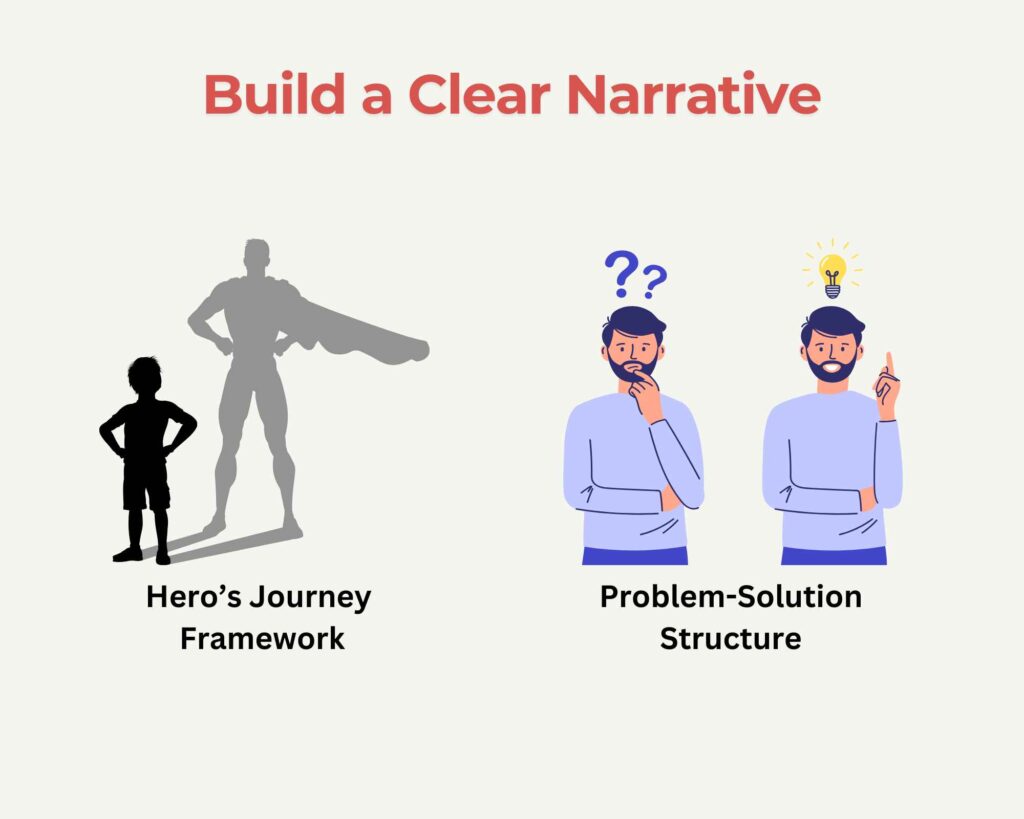
Now, let’s talk about a very important storytelling technique that sets the narrative for the entire video. This is called the Hero’s Journey Framework and Problem-Solution Structure. Here’s how this structure is applied in marketing or communication
The Hero’s Journey Framework
This is a universal pattern used in scriptwriting that resonates with all types of audiences. Here is how you can break down the hero’s journey framework.
- Define the Hero (Customer): The hero is your customer, who starts with a problem or challenge that disrupts their routine or goals.
- Identify the Call to Action: This is where your customer realizes they need to address their problem, initiating their journey.
- Position Your Brand as the Solution: Your role is to offer solutions, resources, or expertise that help the hero overcome obstacles.
- Trials and Decision Points: Highlight the challenges your customer may face while deciding. This can actions like comparing products or weighing options so it has to be supported with helpful content or tools.
- Resolution and Advocacy: Once your solution helps the hero (customer) succeed, they transition into brand advocates. These can be options like referrals or loyalty programs.
Problem-Solution Structure
The Problem-Solution structure is another tried and tested framework that you can use to create an impactful commercial script.
To begin:
- Set the Scene with the Problem: Start by identifying the customer’s pain point or challenge. This step should resonate with your target audience as empathizing with their struggles helps build an emotional connection.
- Introduce Your Solution: Once the problem is established, transition into presenting your product, service, or idea as the perfect solution. Highlight unique features or advantages that directly address the audience’s challenge. This way you demonstrate value and show how your solution simplifies the situation.
- Reinforce the Outcome: Conclude with a depiction of the transformation or benefits your solution provides. Here you can use testimonials, before-and-after scenarios, or data-driven results to solidify your claim. The goal should be to leave the audience feeling confident and eager to take action.
Step 4: Highlight the Value Proposition

Continuing from the Hero’s Journey concept, there are many ways you can highlight your product or service as a hero.
Here are some strategies you can follow:
- Define the Hero Role Clearly: Position your product or service as the ultimate solution to a specific problem. There should be no better product out there as a choice than yours!
- Focus on Benefits Over Features: To make your product stand out, highlight benefits such as time-saving, cost-efficiency, or possible life improvements that can come from your product. The audience needs to see its direct value in their lives.
- Leverage Storytelling: additionally, use real-life stories from existing users to solidify your claims. This taps into the emotions of the viewers as your product is easier to trust.
- Use Strong Visuals and Messaging: Make your product stand out with attractive packaging, visuals, and a tagline that communicates its qualities.
- Social Proof and Trust: Make sure your product incorporates reviews, testimonials, or influencer endorsements to show why others trust and value your product.
- Innovate and Adapt: Continue improving or iterating the product while exploring new channels for marketing. This keeps this fresh helping your product remain relevant with time.
Step 5: Craft a Compelling CTA
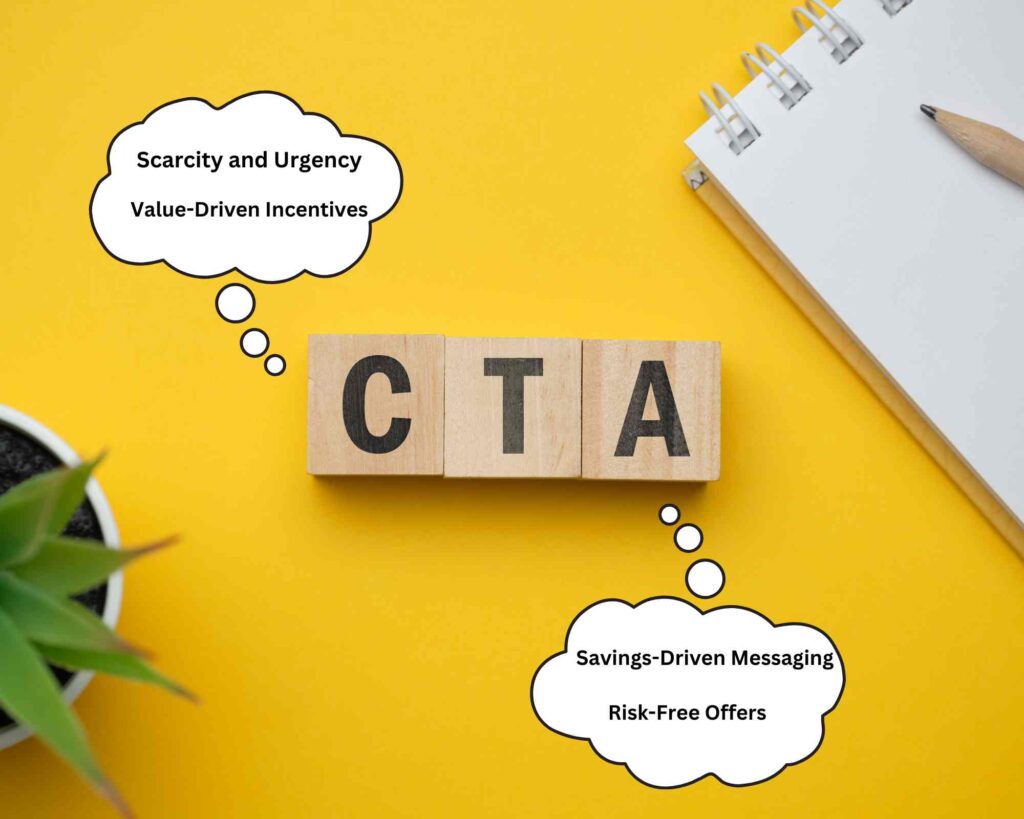
Now that you have all the above in order, the final sign-off is a compelling CTA. This is the instruction you leave behind for the viewer to take action like making a purchase.
Do you know there are strategies here too?
Here are a few ways CTA can speed up conversions!
- Relatable Read: Types of Commercials: A Complete Guide for Businesses
Scarcity and Urgency
Scarcity is a big driver of demand. When you know something is limited in number, the demand for it automatically increases!
A CTA like “Secure your exclusive discount today!” emphasizes limited availability to prompt immediate action great for flash sales or promotions.
Value-Driven Incentives
If immediate sales are not what you need right away, you can give free items to increase the value of your brand in the viewer’s eyes.
A CTA that goes like, “Sign up now and receive our free e-book.” offers a tangible benefit, such as a free resource. This way you can get access to information that can be used to an email list for future sales.
Risk-Free Offers
Service industries benefit from “Free Offer” CTAs like “Try it free for 30 days.” This way the viewer gets to try the product first before committing monetarily.
Savings-Driven Messaging
The most effective CTA for driving sales are those that go like “Buy now and save 20% on your first purchase” or “Buy today for exclusive 50% off”. These combine urgency with a financial incentive for cost-conscious users and motivate immediate purchases.
- Relatable Read: 10 Tips For Filming Commercials In Los Angeles
Key Components of an Effective Commercial Script
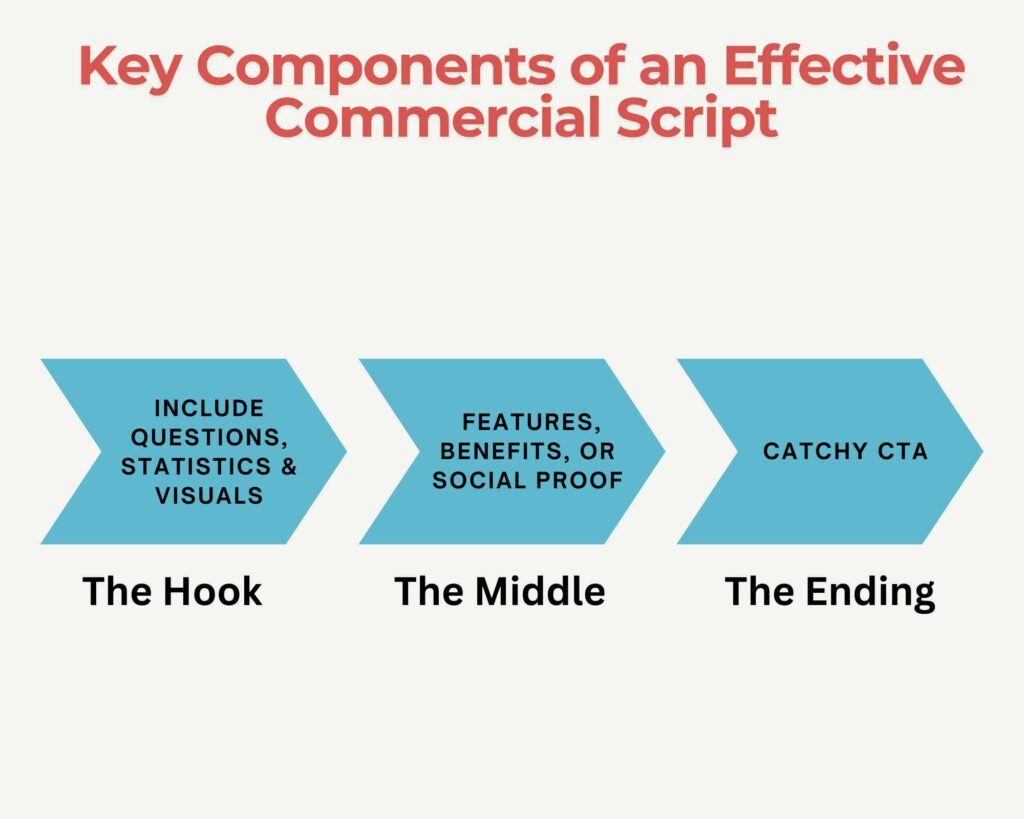
A commercial can be broken down into three parts, the hook, the middle, and the ending. Together they make an effective commercial script.
The Hook
The hook is your opening statement or scene. Its primary goal is to grab the audience’s attention immediately. A strong hook ensures that viewers stay engaged beyond the first few seconds.
Examples of Strong Openings
- Start with a provocative question: “What if you could save an hour every day?”
- Use an unexpected fact or statistic: “Over 70% of people waste 20 minutes searching for their keys every week.” Make sure these statistics are backed by research.
- Create stunning visuals: An example can be a close-up of a broken clock with the sound of ticking or a scene with a dimly lit, urban environment at night.
The Middle
This is the body of your script, where you explain the features, benefits, or stories related to your offering. The goal here is to maintain engagement while building trust and interest.
Here you introduce a problem or pain point the viewer relates to and offer your product or service as the solution. Using social proof is vital here you can do this through testimonials or real-world examples. To keep the body engaging, keep the concise and use persuasive language.
The Ending
A powerful ending leaves a lasting impression and motivates viewers to take action. It’s where you drive your core message home and include a call-to-action (CTA).
This is where you summarize your key message to reinforce why your product is the best solution. The viewers need to know that they will benefit from your product. Try to design the acne to portray happiness and joy to solidify the ending.
7 Common Scriptwriting Mistakes to Avoid
Sometimes you can go off track when writing a script that defeats the purpose of your ad in the first place. Here are some scriptwriting mistakes that you should avoid at all costs.
1. Being Too Salesy
- Mistake: Try not to overload the script with hard-selling messages. This alienates the audience making it pan out to be less engaging.
- Solution: Focus on storytelling that naturally integrates the product or service. Highlight benefits through relatable scenarios and emotions instead of just highlighting features.
2. Unclear Messaging
- Mistake: If the script lacks a clear focus or wanders off-topic, the audience will lose interest or miss the main point.
- Solution: Define the core message before writing through to the point wording and structure the script in a way that supports the main idea.
3. Neglecting Calls to Action (CTAs)
- Mistake: Never miss the icing on the cake, which in terms of scriptwriting is a strong, CTA.
- Solution: Add CTAs that align with the script’s objective so that it fits naturally within the flow of the narrative.
4. Ignoring Audience Engagement
- Mistake: Scripts that don’t consider the target audience’s interests or preferences will fail to connect.
- Solution: Research your audience’s demographics, tone, and preferred content style before writing your script. Subtle changes can go a long way.
5. Overloading with Information
- Mistake: Providing excessive details or unnecessary jargon can confuse your audience.
- Solution: Prioritize the most relevant points and simplify complex ideas. Your product may have the same features as many others in the market. How you can stand out is by highlighting what features you have over the competition to stand out.
6. Poor Storytelling Structure
- Mistake: Scripts without a proper structure may fail to maintain audience interest.
- Solution: Use a clear framework, such as the three-act structure (setup, confrontation, resolution). Build tension and resolve it to keep the audience engaged.
7. Weak or Unauthentic Dialogue
- Mistake: Dialogue that feels forced, overly formal, or unrealistic can make characters less relatable.
- Solution: Write conversational dialogue that reflects natural speech specific to each character’s voice and personality.
Relatable Read: How to Write a Script for a Short Film? – Step By Step Guide
Tools and Resources for Writing a Commercial Script
With the technology right now, you can do a lot through apps and the internet. When creating a commercial script, here are some important tools to know about.
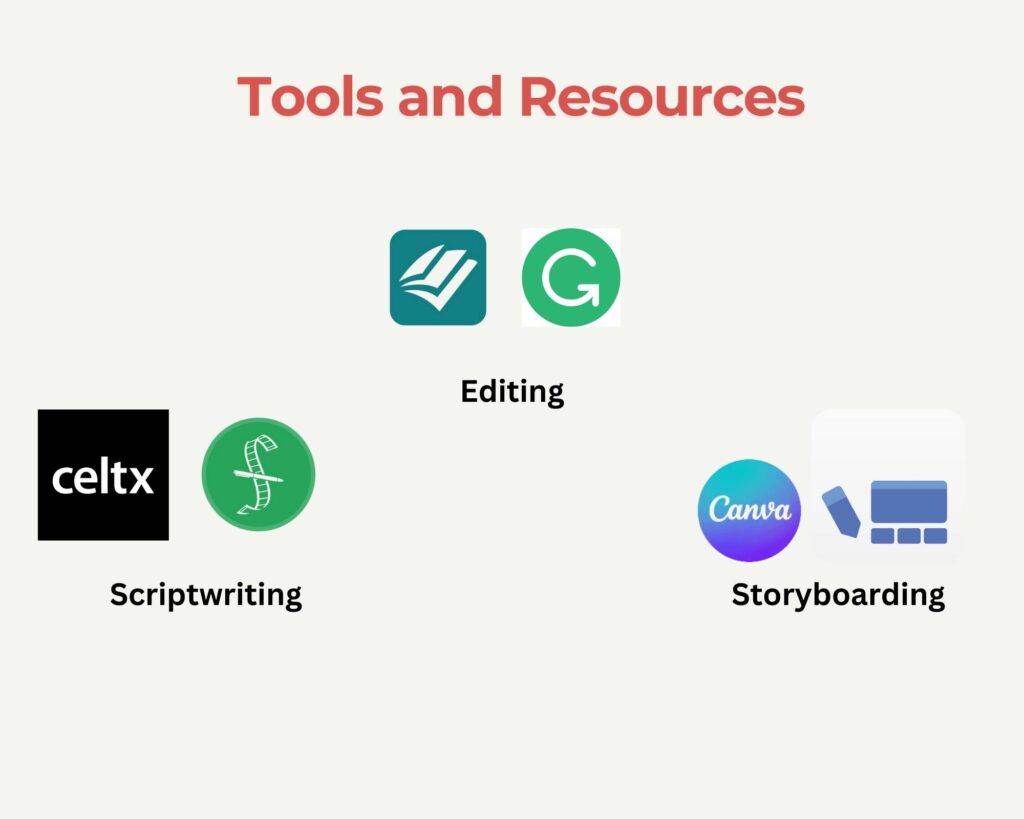
Scriptwriting Software
- Celtx: A platform for scriptwriting and production planning where you get industry-standard formatting and collaborative features. It’s great for professionals working on commercials, films, or theater.
- Final Draft: Widely regarded as the industry standard for screenwriting. This app includes intuitive formatting and story development tools.
Editing Tools
- ProWritingAid: Offers in-depth editing suggestions, including style improvements and readability scores.
- Grammarly: Ensures your script is free of grammar errors and reads smoothly. It’s an excellent choice for refining the tone and clarity of the text.
Storyboarding and Visual Planning
- Canva: Perfect for creating visually appealing storyboards with pre-designed templates.
- Storyboarder: A free tool that allows you to sketch and organize storyboards digitally. It’s simple and integrates well with other creative software.
- Exaltus: This tool simplifies the creative process by providing tools to visualize concepts and sequence ideas.
Real-Life Examples of Successful Commercial Scripts
Let’s take a look at some of the best commercial scripts ever to hit our screens.
“1984” (Apple)
This iconic commercial, which aired during the Super Bowl in 1984, was directed by Ridley Scott. It depicted a dystopian society controlled by a Big Brother-like figure. The ad showed a lone woman breaking free from the oppressive system by throwing a hammer at a giant screen. It symbolized the arrival of Apple’s Macintosh computer as a revolutionary force in the world of personal computing.
Impact
The ad was groundbreaking for its bold narrative and visual style. It shows how Apple positioned itself as a brand that embraced individuality and creativity. It became an instant classic and helped set the stage for Apple’s image as a challenger to the establishment.
Takeaway
The ad demonstrates how a powerful narrative and bold imagery can create a lasting impact. It didn’t just sell a product; it sold a vision.
Dumb Ways to Die” (Metro)
The commercial used humor and colorful characters to deliver a serious message about train safety. By showing exaggerated and humorous deaths, it grabbed attention and engagingly delivered its message.
Impact
It went viral with over 303 million views and led to more than 127 million people pledging to be safer around trains.
Takeaway
This ad works because it combines humor with a powerful social message, showing how creativity can engage viewers in unexpected ways.
“Magical Place” (Toys R Us)
The ad used a catchy and emotional jingle to evoke nostalgia while highlighting the magic of childhood and the role of Toys R Us in making it special.
Impact
The ad remains iconic, and its music has been etched into the memories of many. It leveraged emotion and memory, making it one of the most memorable jingles in commercial history.
Takeaway
This ad emphasizes the power of music and emotion in commercials, which can forge a strong connection between the brand and its audience.
“The Last Game” (Nike)
A five-minute mini-movie featuring your favorite athletes. It combined stunning animation with a heroic storyline about saving sports from the “clones” of uniform athleticism.
Impact
This gripping narrative elevated Nike from a sports brand to a storyteller. Its production value and narrative depth turned it into a viral sensation and a stand-out among Nike’s portfolio.
Takeaway
This ad shows how storytelling, when done effectively, can transform a simple product message into an epic saga.
“Our Blades Are F*ing Great” (Dollar Shave Club)
A straightforward, witty commercial where the CEO, Michael Dubin, humorously talks about the company’s razor blades. It is sharp, funny, and memorable.
Impact
The ad went viral, generating 28 million views on YouTube and leading to the company’s acquisition for $1 billion. Its success was driven by a clear message and humor that appealed directly to its target audience.
Takeaway
This ad demonstrates the power of personality and humor in breaking through the clutter. It effectively communicates the product’s value in a fun, unforgettable way.
Ready to Start Writing High Converting Script?
Just like blades to a razor, a well-crafted commercial script is essential for creating ads that can boost conversions.
If you cannot hook your audience in the first 5 seconds then you did something wrong. Scriptwriting is an art that needs to be strategic.
So, get a hold of the purpose of a commercial script and craft a persuasive storyline to boost sales and
Frequently Asked Questions (FAQs)
A commercial script is a written blueprint for an advertisement. It outlines the dialogue, actions, music, sound effects, and visuals required to convey a brand message.
The length of a commercial script typically depends on the duration of the ad. For example, a 30-second commercial script usually contains about 75 to 90 words. A 60-second commercial can range between 150 and 180 words.
An effective commercial script engages the audience from the start. It should present a clear problem and solution and end with a compelling call to action. Elements in a script should include a strong hook, emotional appeal, and a clear brand message. Many writers use storytelling techniques like the hero’s journey or problem-solution frameworks to write a script.
While it’s possible to write a commercial script on your own, professional help can save a lot of time. Scriptwriters bring expertise in storytelling, pacing, and messaging that ensure your script can capture attention and achieve your advertising goals.
Tools like Celtx can be used for scriptwriting, Grammarly for grammar and style checks, and Canva for storyboarding visual elements.

Executive Producer at LocalEyes Video Production | Emmy Award Winning Producer

